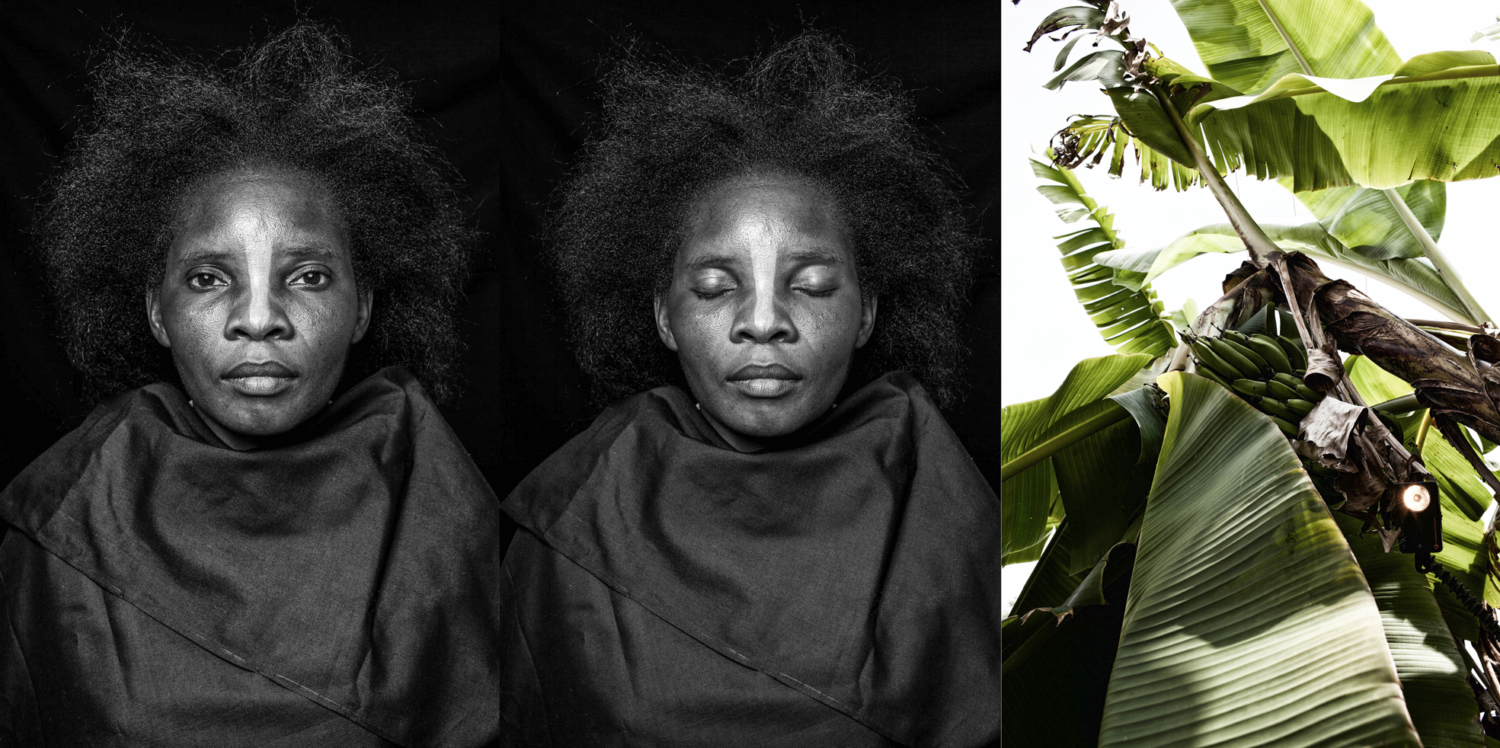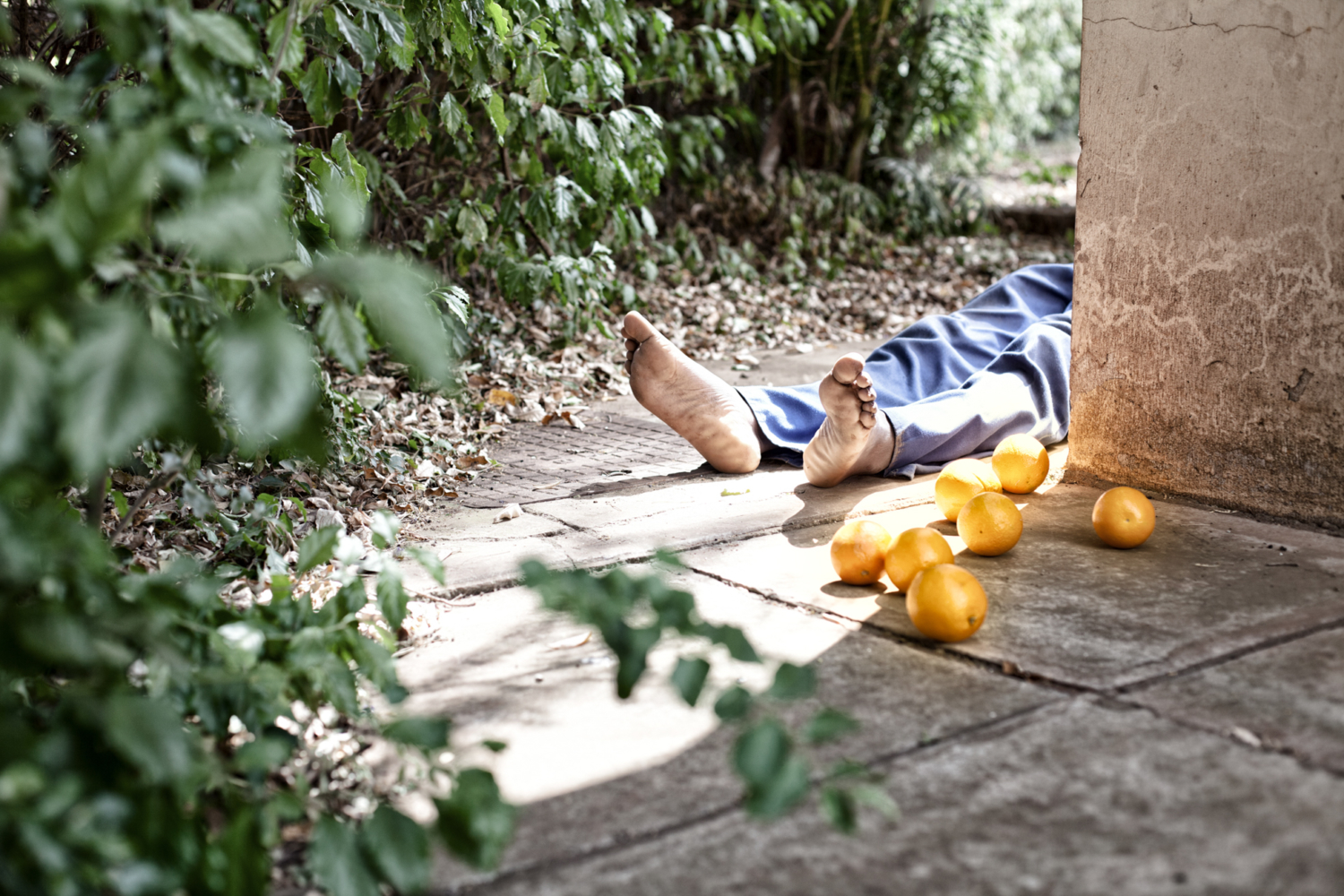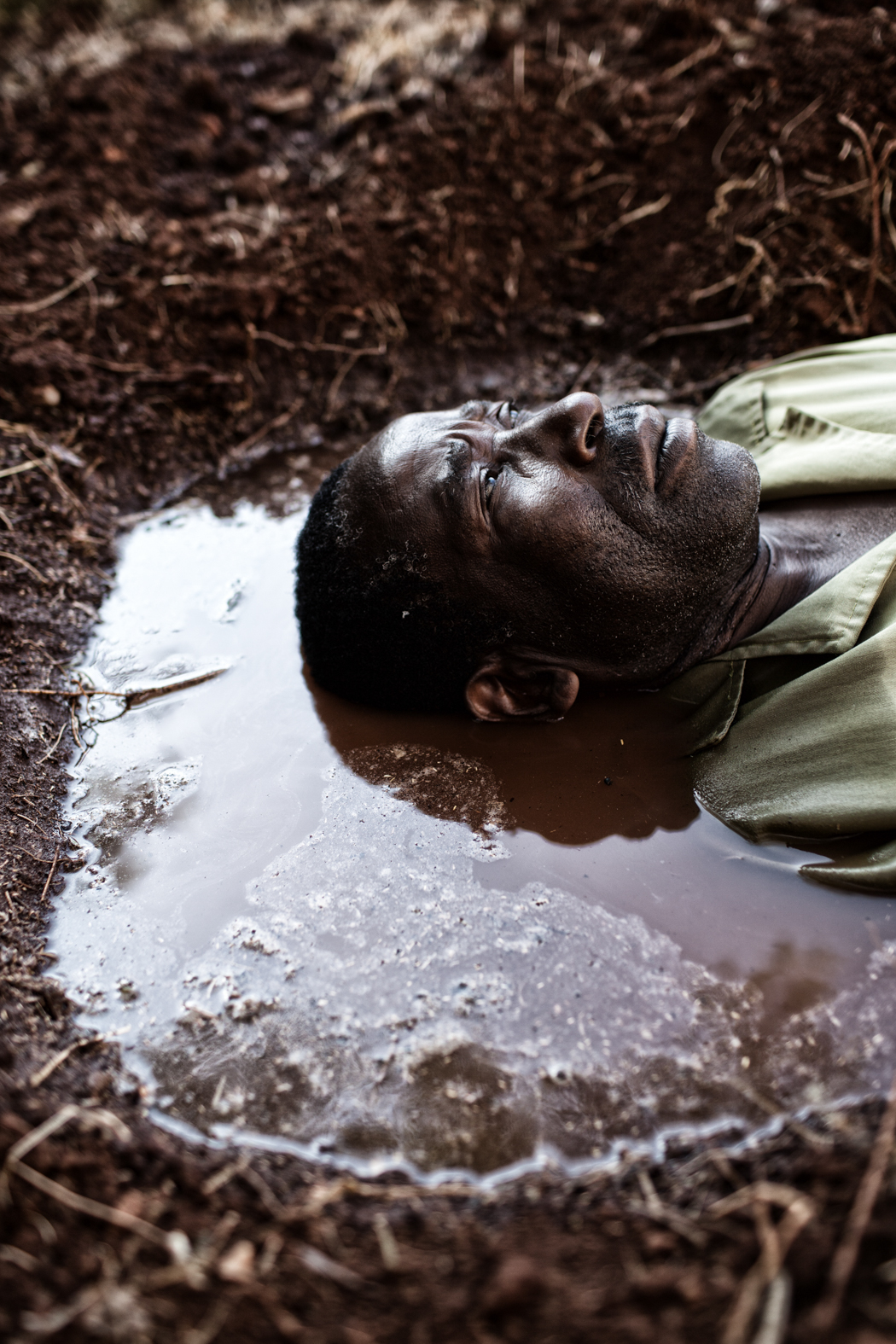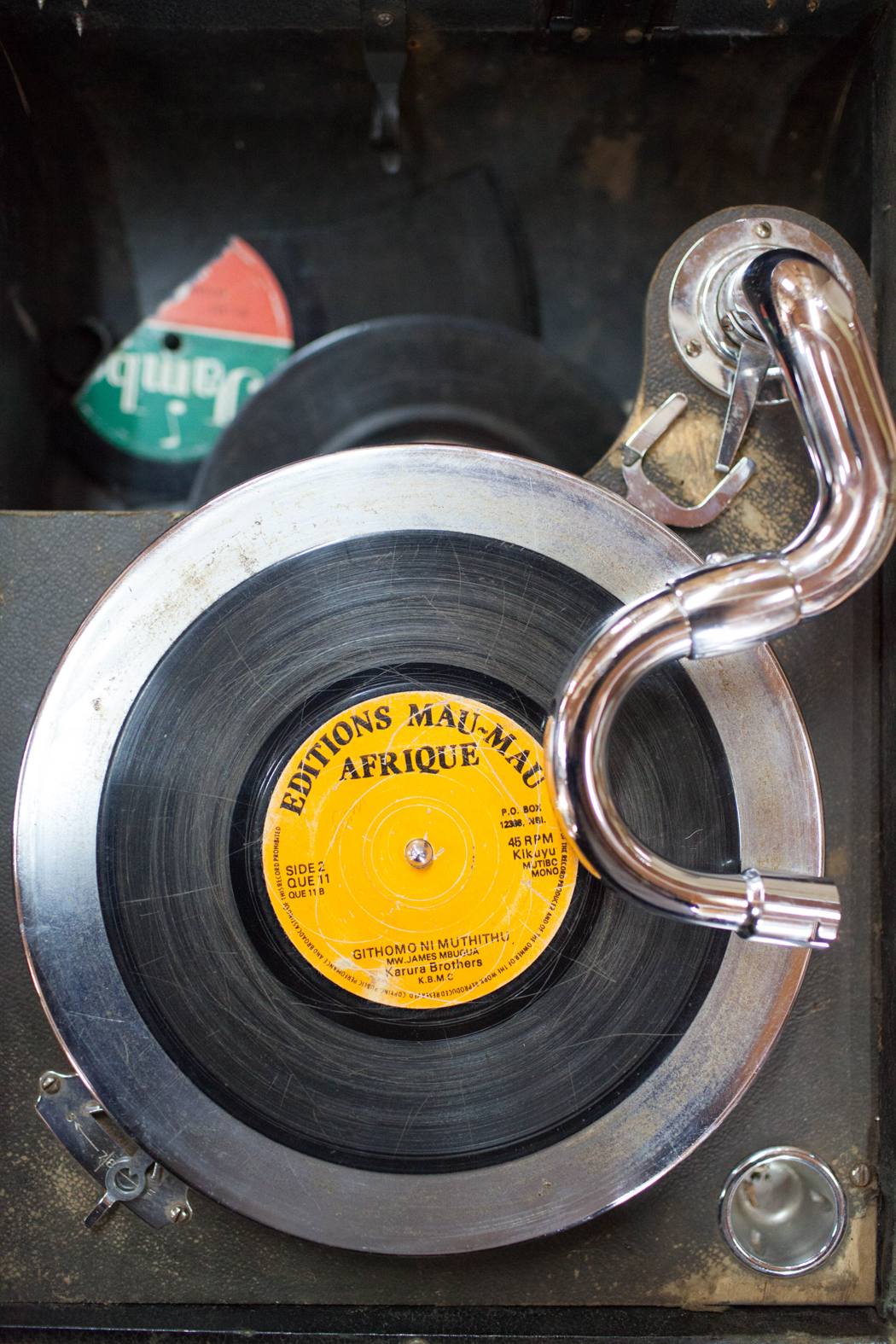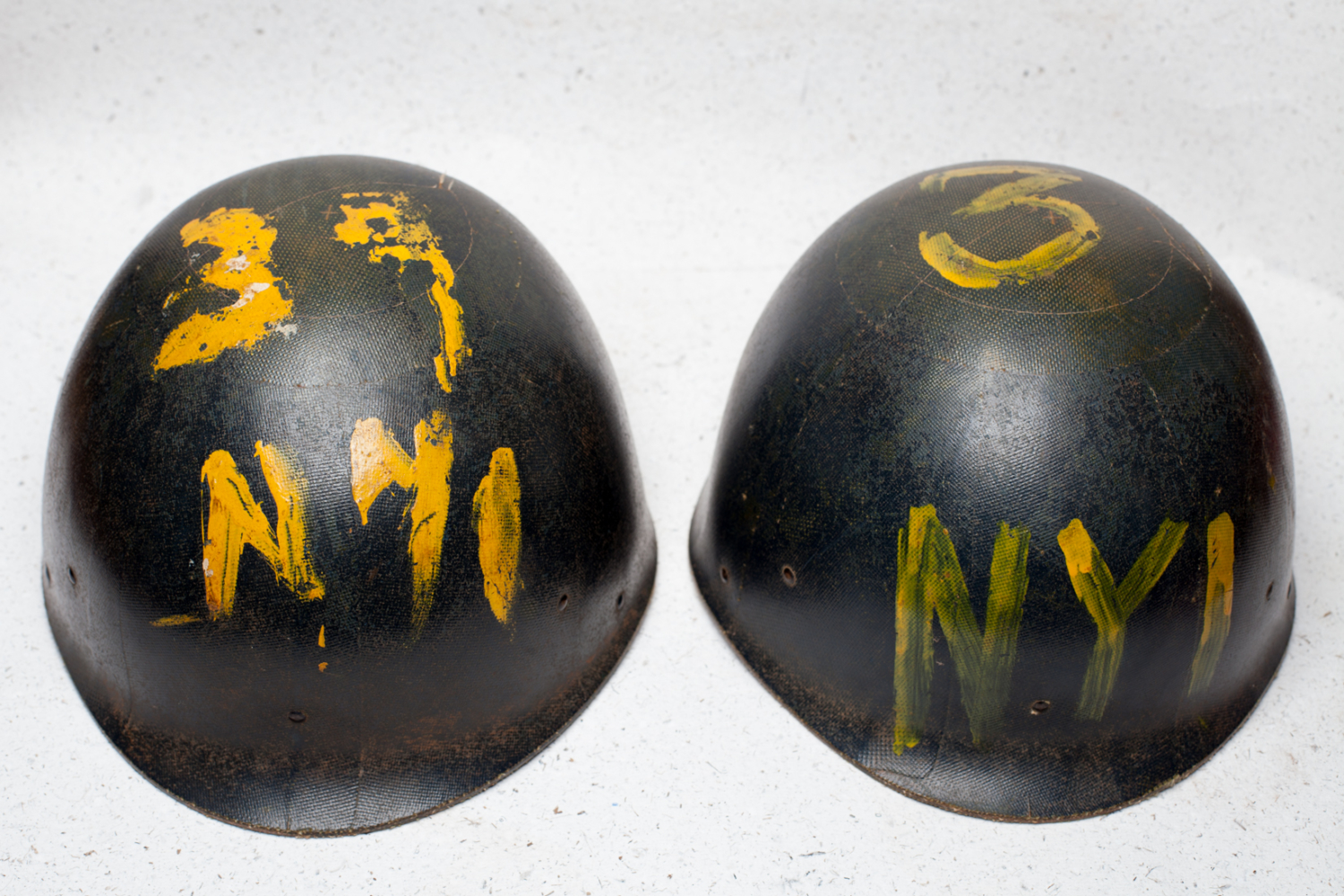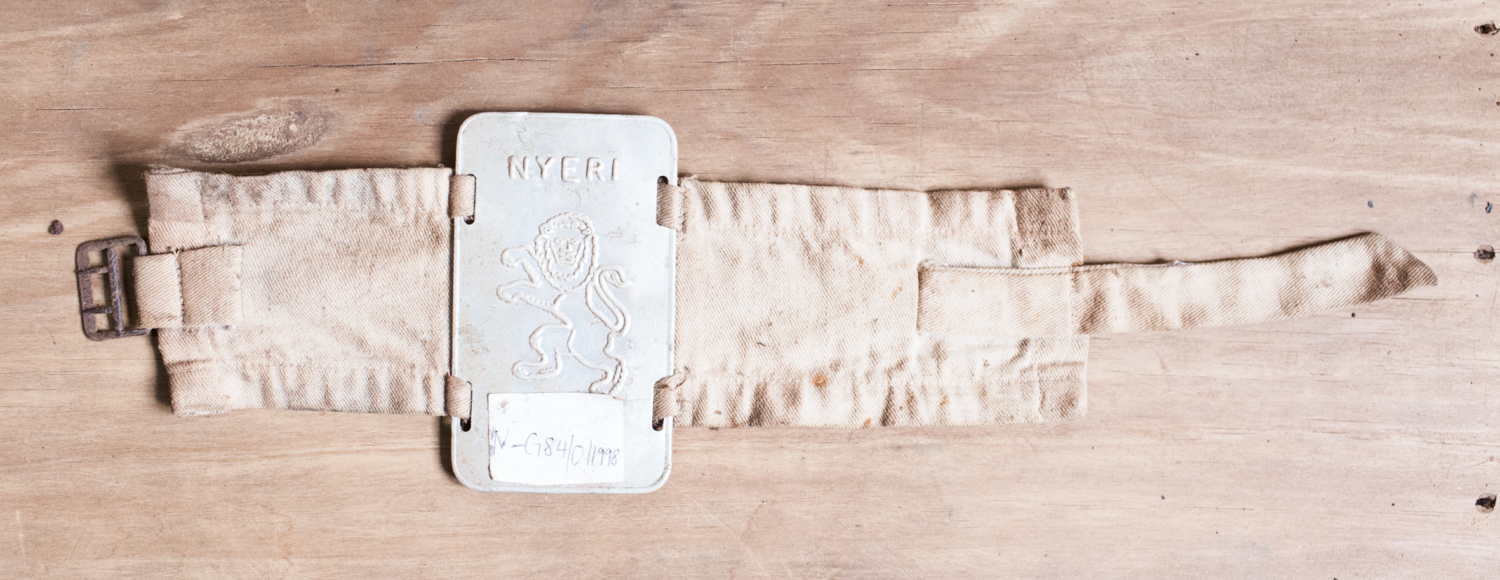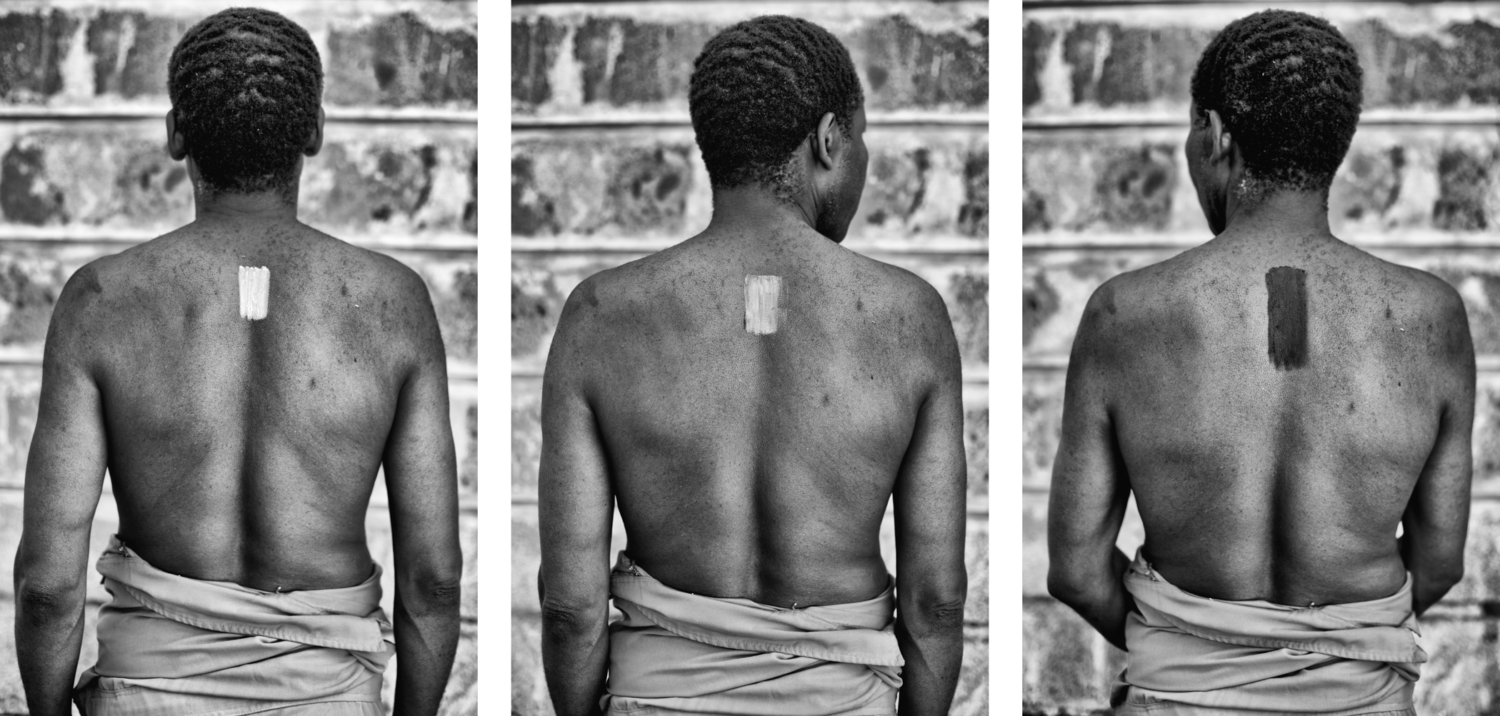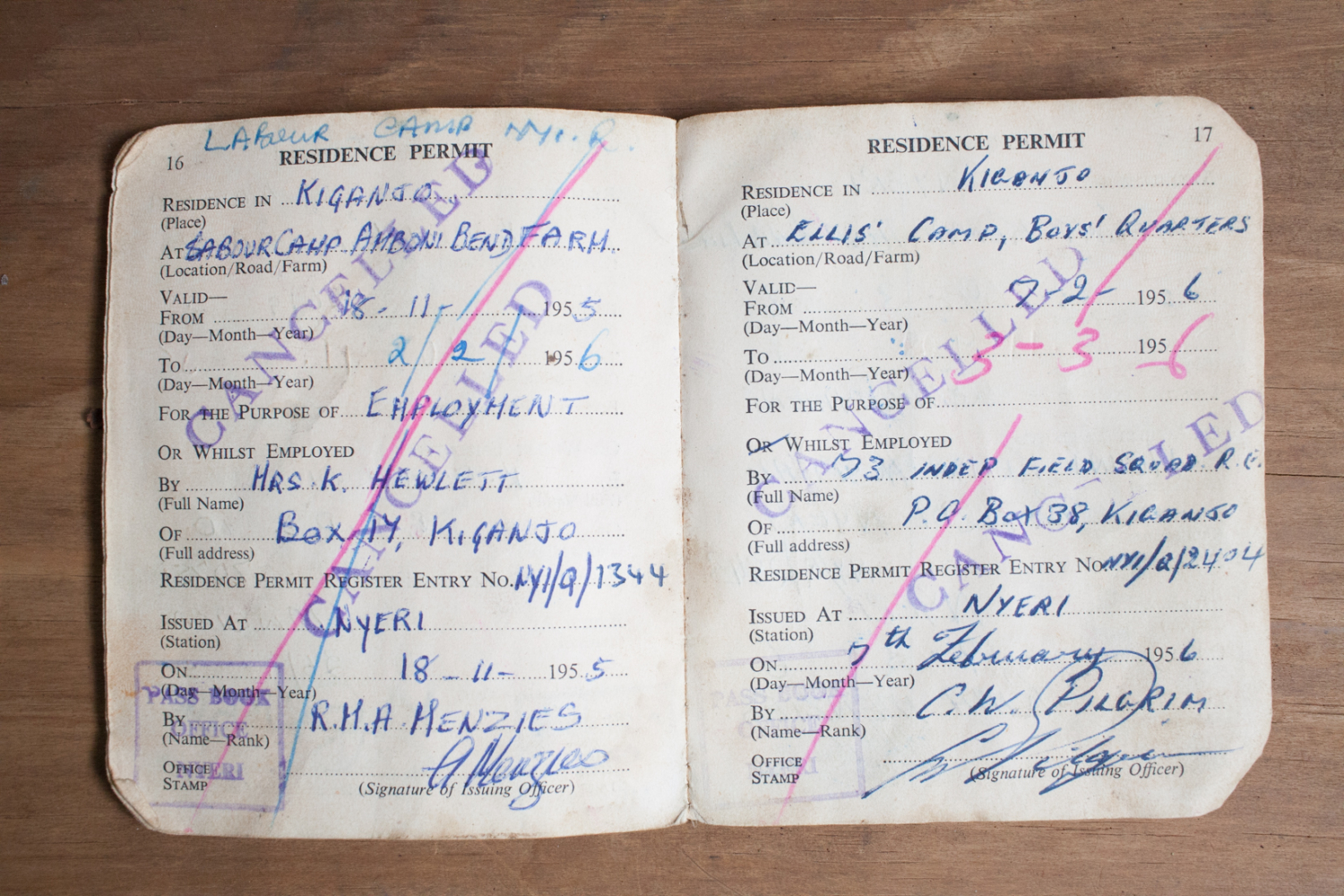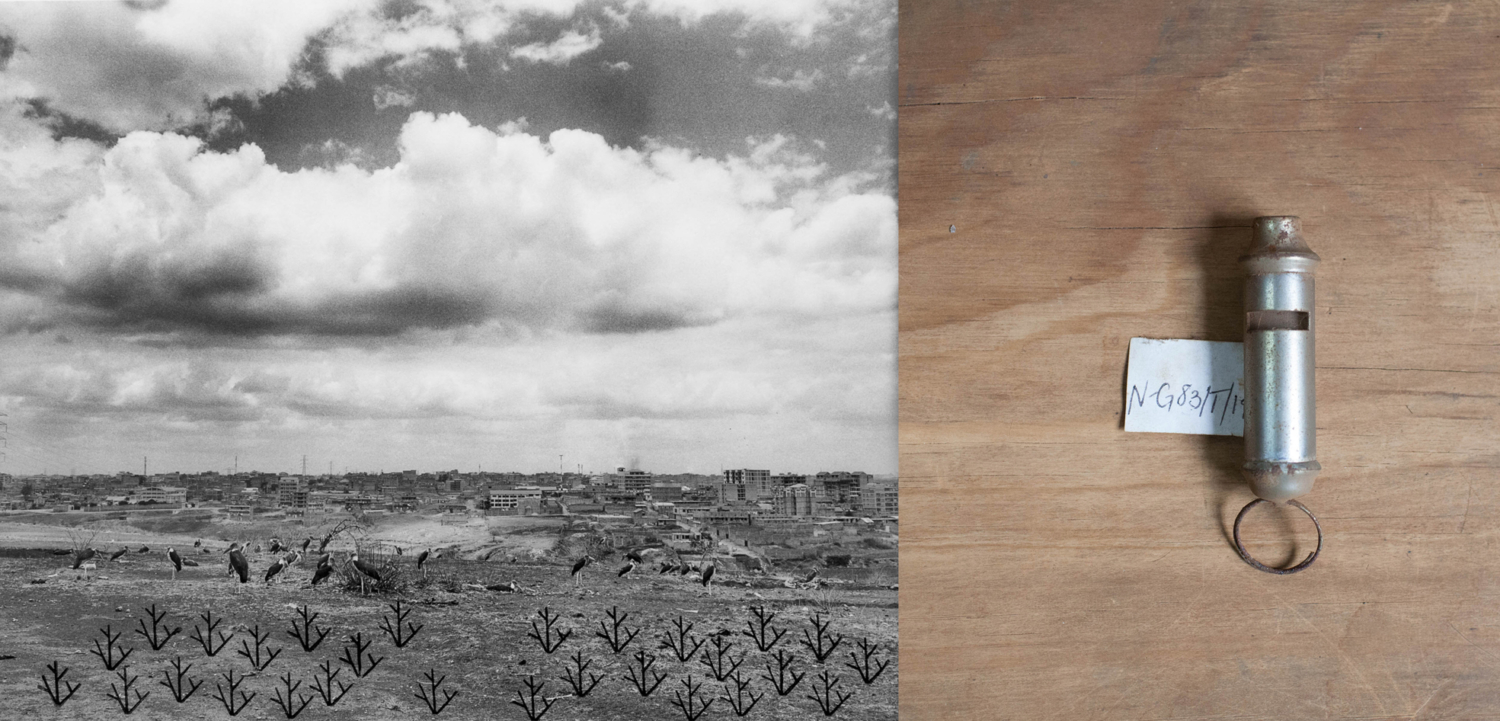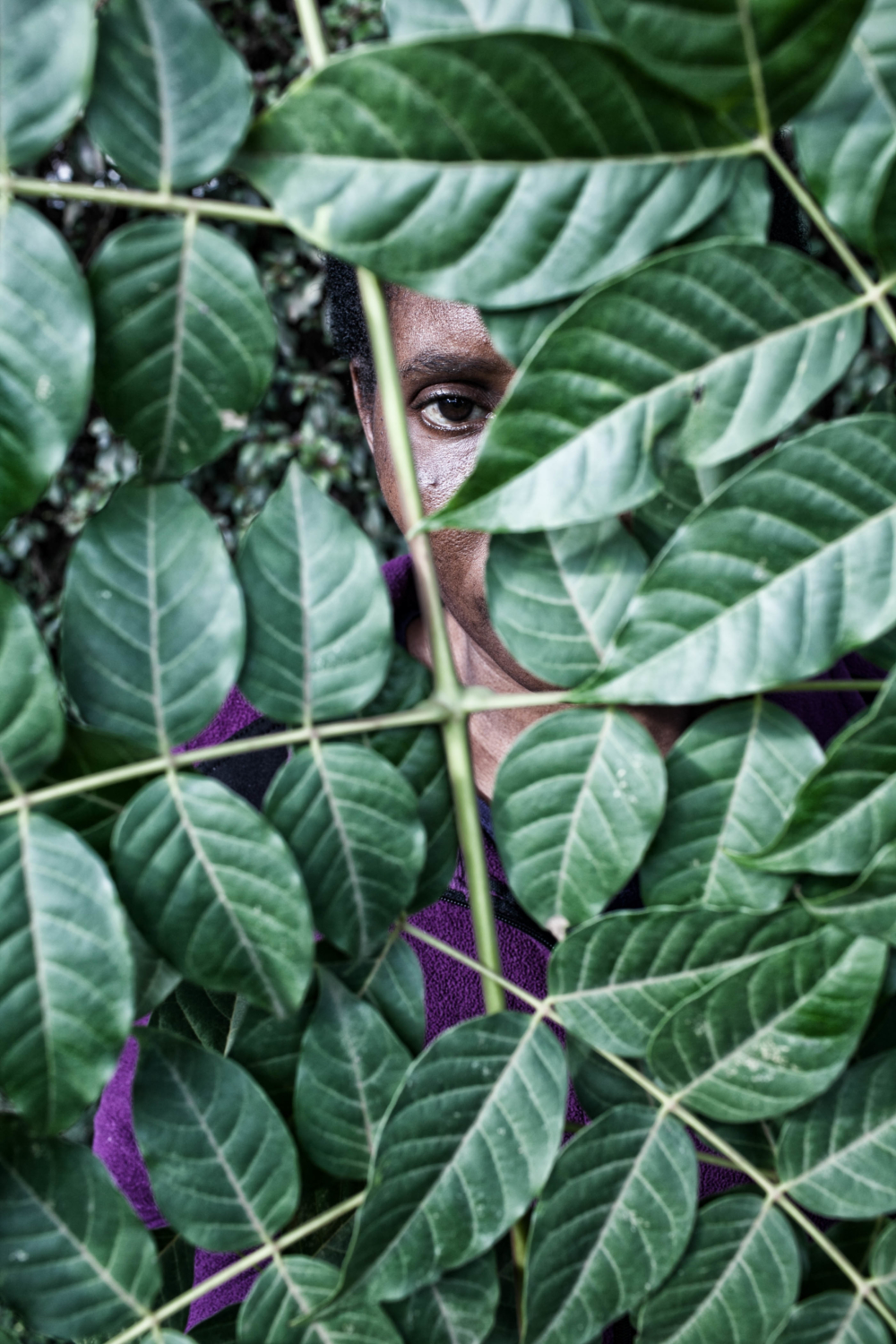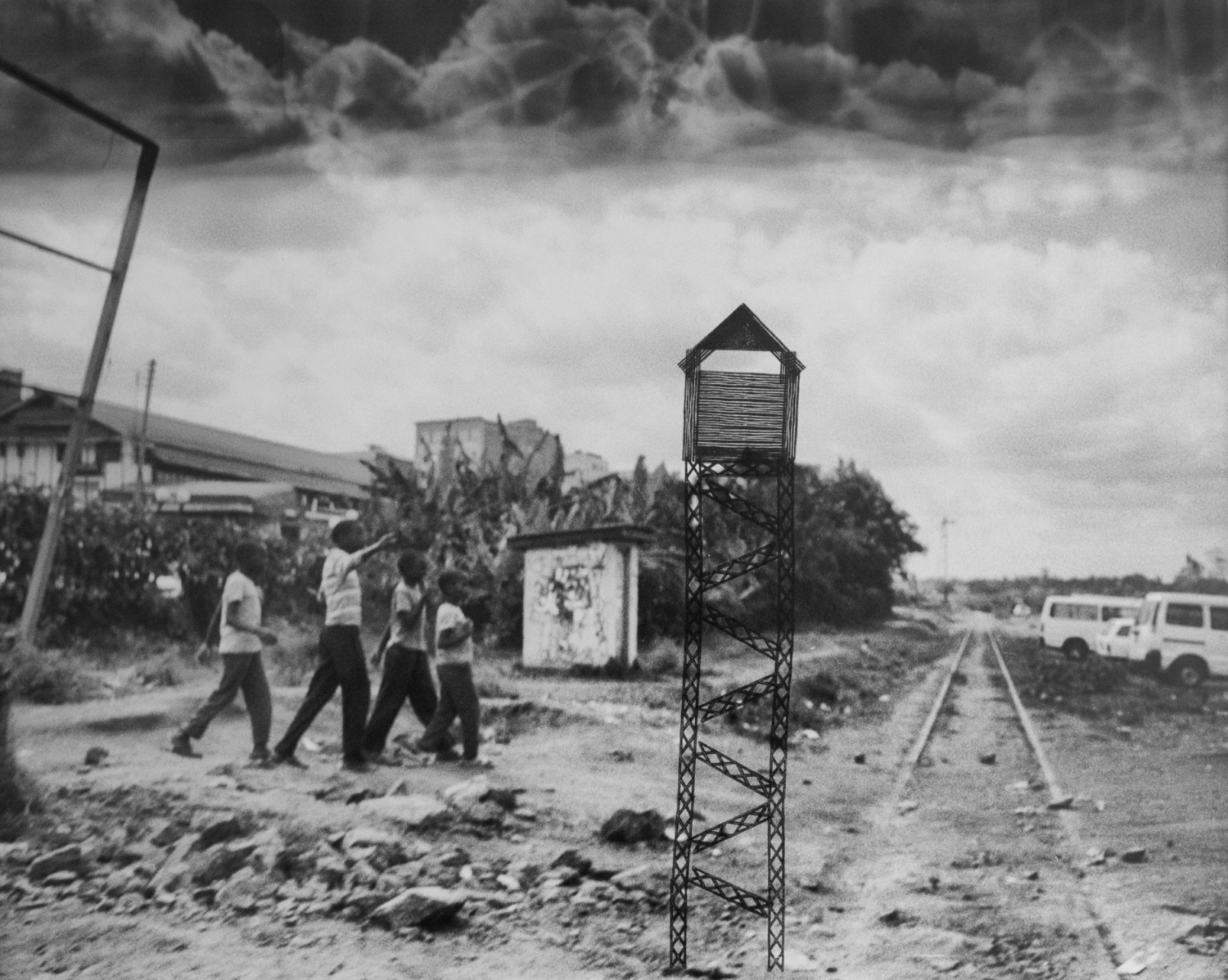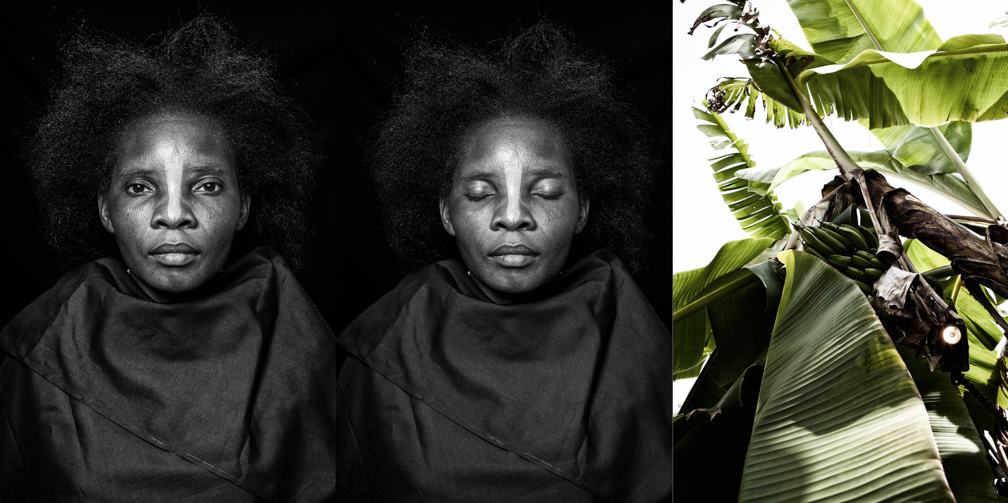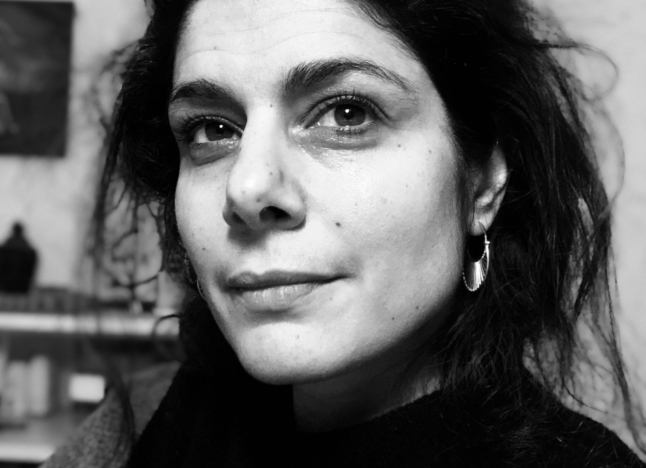Nicholas Hubicki
Artist Feature
Every week an artist is featured whose single image was published by Der Greif. The Feature shows the image in the original context of the series.
Nura Qureshi - Are You Calling Me a Dog?
Nov 20, 2019
In 1963 Kenya achieved independence from Britain after a long struggle for liberation. The decade-long conflict known as the Mau Mau Rebellion, led by members of the Kikuyu people, was the most prolonged and violent anti-colonial warfare in the British Kenya colony. Although suppressed by the British, the Mau Mau resistance laid the groundwork for Kenya’s decolonization.
Are You Calling Me A Dog? reimagines the history of the Mau Mau Rebellion against British colonialism in Kenya. Using film and digital landscape and portrait photography this series recreates scenes from the most prolonged anti-colonial struggle in British Kenya. Eschewing graphic representations of physical violence, it focuses instead on Mau Mau rituals of initiation and surrender, as well as British symbols and infrastructures of oppression, to expose the brutality and dehumanization of colonialism.
The series is guided by available historical sources like military and oral histories. It also draws on the places and people of contemporary Kenya – visits to sites of the Mau Mau resistance, interviews with former Mau Mau fighters, conversations with Kenyan domestic workers – for its visual language. Historical sites of Mau Mau rebellion and surviving Mau Mau fighters, but also Nairobi domestic spaces and laborers, become the protagonists in conjuring a set of questions about power and freedom for both past and future generations of Kenyans.
Artist Blog
The blog of Der Greif is written entirely by the artists who have been invited to doing an Artist-Feature. Every week, we have a different author.
Published in:
»Der Greif #12«
The Oath Administrator
Nov 27, 2019 - Nura Qureshi
Kenya’s beautiful, bountiful land had been taken over by the British and the Kenyans ended up leasing a lot of their own land back to grow their food. There was a lot of anger and people wished to take over what had been theirs all along. Oath administrators were responsible for introducing the movement and reading vows to be repeated by those swearing their allegiance to the resistance. The Mau Mau used torches in banana trees to signal their presence. In the beginning, it was a voluntary act to join the Mau Mau, but as time went on one had to make a choice: Either to stand with or against them.
I had prepared a rope and found some white face paint. I had told Janet, usually shy and with her hair pulled back, beforehand about who she was going to represent and there she was coming down the driveway with a long strong stride and her hair uncombed.
Villagization
Nov 26, 2019 - Nura Qureshi
Villagization was the British program of forced resettlement to cut off Mau Mau’s supply lines. About 1.5 Million Kikuyu, mostly residents of the Kiambu, Nyeri, Murang’a and Embu Districts, were forced to move into “protected villages” behind barbed-wire fences and watch towers. The kipande identification chain indicated the tribe to which a person belonged and had to be worn at all times. There were no advance warnings before the evictions began and villages were burned down.
I found very little artifacts of the era and in general, the Kenyans didn’t like to talk about the history of the land or their memories that formed the roots in the soil. When we approached some War Veterans in their association building adjacent to the former courthouse, they only used the translator to communicate with us. After we talked for a while, realizing that I was German, not British as they assumed, they looked us straight into the eyes while speaking English and being happy to have met someone interested in their story.
Editions Mau-Mau
Nov 25, 2019 - Nura Qureshi
Members of the Mau Mau called themselves the Land & Freedom Army. Their mysterious aura was the result of oathing ceremonies including animal sacrifices, eating the goat’s heart and lungs, swearing of a series of oaths, being tied together with goat skins and passing through banana stalk arches to be “reborn”. Some of the ceremonies would take place in rooms barely lit by candles.
The British Military tried to encourage Mau Mau fighters to come out of their hideout in the forests and surrender by carrying branches in front of their faces. There are no known white flags as death was certain either way once the line was crossed. In the end, a lot of Kenyans still don’t live on the land they once fought for, but like the African Proverb says “When elephants fight, it is the grass that suffers”.
Confession
Nov 24, 2019 - Nura Qureshi
The British set up detention camps and the detainees had to go through a screening where their files were marked:
X: Confessed & Cooperative and Z: Hardcore
Those who confessed and were cooperative were put into rehabilitation centers to denounce the Oath. Those deemed more dangerous and hardcore Mau Mau supporters were sent to special camps, where hard labor and torture awaited them.
7 Oranges
Nov 23, 2019 - Nura Qureshi
James came around that day I read Caroline Elkins “Britain Gulags”. Although he is not from the conflicts most involved and Kenya’s largest ethnic group, the Kikuyu, he knew about how the Mau Mau considered those who continued to work for white settlers to be traitors. Refusing to join the resistance was punishable by death. Eye Witnesses would recall walking around the farms with the feeling of anticipation of yet another dead body lying on the ground.
Moving Gallows
Nov 22, 2019 - Nura Qureshi
My very good friend & collaborator Samantha Ripa di Meana and I took a trip to Nyeri, where Dedan Kimathi, rebel and spiritual leader of the Mau Mau, was not only born but also sentenced to death. We walked along the what seemed to be abandoned court building in Nyeri and talked to the court attendee when a small black and white copy of a photograph pinned to the wall behind the entrance door caught our attention. During the Emergency, the British Military introduced moving gallows to hang Mau Mau suspects. The only remnant of the gallows existence is this copy of a photograph.
Like a man trying to hide his scars, the will to erase the traces of its footprints, the Kenyans have transformed the landscape, where camps and executions, tortures and trials took place and have replaced them by school, churches, quarries and airports.
Muddy Pit
Nov 21, 2019 - Nura Qureshi
I started digging a hole in the earth or rather trying to. The earth had become dry and hard due to the lack of rain at that point in the season. Anthony, the estates gardener, was watching me and asked me to dig the pit himself. First I refused, but then I gave into him. And just like I imagined after reading about the interviews of the Mau Mau prisoners, he started digging away every so often looking at me for approval about the depth of the hole. It felt uncomfortable standing around and watching him dig away for a project that the tribe he was from had nothing to do with. Or did he? Didn’t they all engage even while not engaging? Didn’t I just right now? I heard myself asking him to fill up the pit with water and lie in it. Not like the prisoners had to for hours or days without eating or drinking. Just for a little while until I couldn’t take the role of the guard any longer.


